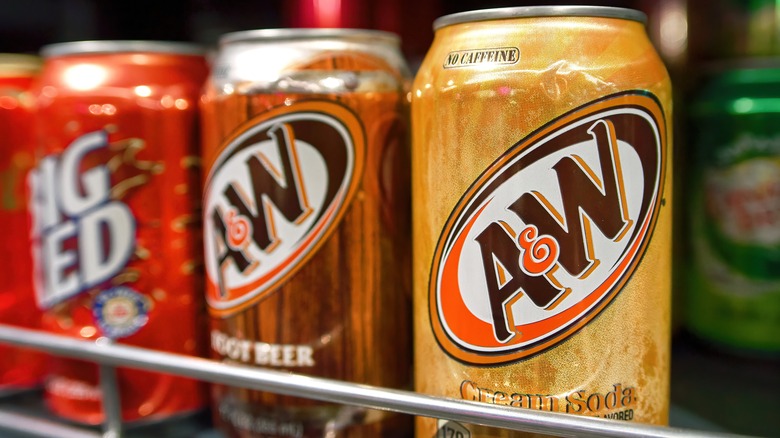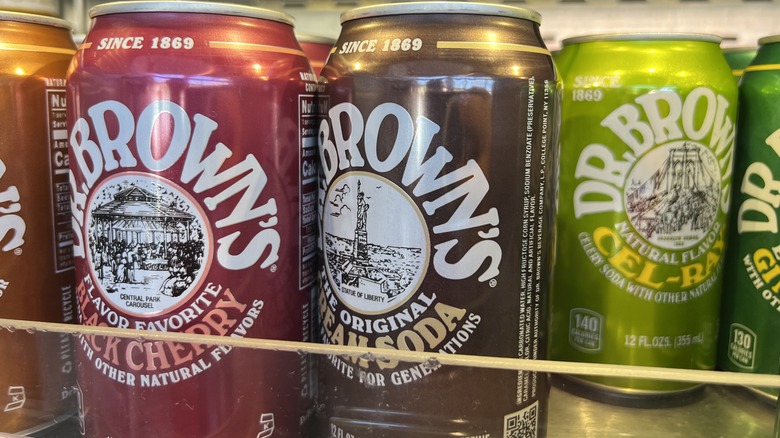Is Cream Soda Just Vanilla-Flavored Root Beer?
Cream soda isn't the easiest thing to find at a convenience store compared to regular Coca-Cola or popular diet sodas from big brands, but it's often there, toward the back of the aisle. What exactly is it, though? That's not a simple answer. What complicates things is that the term "cream soda" refers to different sugary concoctions with (mostly) similar flavors but different recipes and origins. Nowadays, it's little more than carbonated water, sugar, and vanilla flavoring with caramel coloring. You can even make it at home with vanilla syrup, cream, and carbonated water, but it may not have that pale tan color.
Root beer is a different story — and a more straightforward one: The slightly misleading name of root beer contains no true beer, but it is flavored from sassafras and sarsaparilla roots. Drawing inspiration from drinks made by indigenous peoples in North America using those ingredients, European colonists made low-alcohol beers. In Philadelphia, Pennsylvania, during the 1800s, the roots were used for a syrup designed to be mixed with plain soda instead, which became how "root beer" was marketed. Does cream soda come into this story at any point, though?
The many recipes of cream soda
Besides the fact that several modern sodas trace their origins to 19th century America, cream soda's more confusing history seems separate from root beer. The oldest drink referred to as cream soda comes from a magazine called Michigan Farmer in 1852, but it includes completely different ingredients, such as an egg for a frothy texture (which NYC's egg cream soda ironically does not contain). The recipe calls it a summer drink that fits with the "Maine Law," passed a year prior, which was one of the first laws prohibiting alcohol in the U.S.
Confusingly, what Americans recognize as modern, golden-colored cream soda may have a few different origins. In Brooklyn, New York, the company now known as Dr. Brown's began selling a tan, vanilla-flavored soda in 1869 and still writes "the original cream soda" on its cans today. Other theories suggest the term comes from soda fountain workers during the Great Depression, who called any kind of soda suitable for adding milk or vanilla ice cream to a "cream soda." Considering the popularity of root beer floats, it seems that root beer could be considered a cream soda in this context, but not necessarily the other way around.
However, it's worth noting that cream soda also means different things around the world. In Canada, Crush-brand cream soda is bright pink and very sweet. In South Africa, Sparletta-brand creme soda is green and tastes more like raspberries than vanilla.

